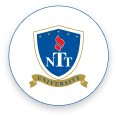English‑majored undergraduates who specialize in English for Specific Purposes (ESP) are preparing to meet the nuanced demands of diverse professional contexts. As the field of TESOL evolves, ESP practitioners must stay informed about emerging trends that shape curriculum design, materials development, and classroom practice. Here are six key trends that undergraduates majoring in ESP should watch closely:
1. Advanced Needs Analysis and Stakeholder Collaboration
Needs analysis remains the cornerstone of ESP, but it has become more sophisticated and collaborative. Instead of relying solely on learner surveys, today’s ESP courses integrate interviews with industry stakeholders—employers, professional associations, and alumni—to identify the precise communicative tasks graduates will face. Undergraduates learn to design multi‑phase analyses, combining quantitative data (e.g., task inventories) with qualitative insights (e.g., focus groups), ensuring that course outcomes align directly with workplace requirements.
2. Corpus‑Driven Materials and Authentic Genre Awareness
The proliferation of specialized corpora—ranging from medical research articles to business‑meeting transcripts—has transformed ESP materials development. Undergraduates are now trained to use corpus tools (such as AntConc) to identify recurrent lexical bundles, discourse moves, and register features unique to their target domain. This trend helps ESP designers create authentic reading passages, model reports, and simulated tasks that mirror the linguistic and rhetorical conventions of specific professions.
3. Technology‑Enhanced and Mobile ESP Learning
Digital technologies have opened new pathways for ESP instruction. Mobile‑friendly apps enable on‑the‑job micro‑learning, delivering bite‑sized modules on email writing, technical vocabulary, or presentation skills. Virtual reality (VR) simulations let learners rehearse client negotiations or medical consultations in immersive environments. Undergraduates specializing in ESP must become adept at evaluating educational technologies for usability, accessibility, and pedagogical efficacy in their chosen subfield.
4. Interdisciplinary and Content‑Integrated Approaches
ESP instruction increasingly blurs the lines between language teaching and content expertise. Engineering, nursing, and finance departments often co‑design modules with language instructors, embedding English instruction within discipline‑specific courses. This interdisciplinary trend prepares ESP majors to collaborate effectively with subject‑matter experts, design integrated syllabi, and create learning tasks that simultaneously develop technical knowledge and communicative competence.
5. Emphasis on Professional Communication and Soft Skills
Modern ESP curricula recognize that technical proficiency alone is insufficient; soft skills such as teamwork, intercultural communication, and digital literacy are equally vital. Undergraduates learn to scaffold role‑plays for multinational team meetings, develop reflective portfolios that document intercultural encounters, and assess digital collaboration tools (e.g., project‑management platforms). Embedding these transferable skills enhances graduates’ workplace readiness and adaptability.
6. Authentic Assessment and Quality Assurance
Assessment practices in ESP are shifting toward authenticity and ongoing feedback. Portfolio assessment, peer critique sessions, and real‑world projects (e.g., drafting a grant proposal or conducting a mock client briefing) replace conventional exams. Learners receive formative feedback throughout a course, fostering self‑regulation and iterative improvement. Undergraduates majoring in ESP must master the design of rubrics that capture both linguistic accuracy and domain‑specific task performance.
Conclusion
For English‑major undergraduates specializing in ESP, these trends underscore the importance of bridging linguistic theory with real‑world application. By mastering advanced needs analysis, leveraging specialized corpora, integrating technology, collaborating across disciplines, and emphasizing authentic communication and assessment, future ESP practitioners can craft programs that truly prepare learners for the demands of their professions. Keeping pace with these developments will not only enhance teaching effectiveness but also ensure that ESP graduates remain competitive and responsive in an ever‑changing global workplace.
GV TBM TATM


